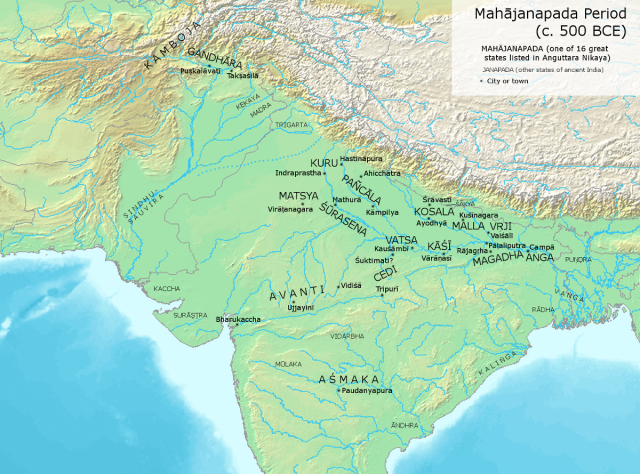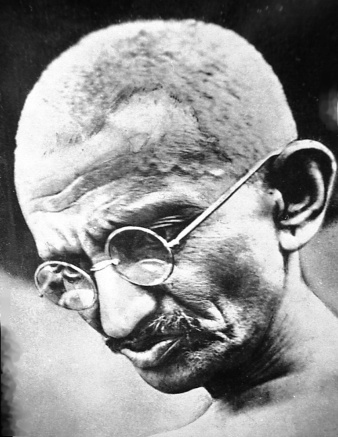
Map of the 16 Janapadas. Source: Wikimedia Commons
I was reading about non-monarchical forms of government in ancient India. Really I was interested in what they call the “Republics” of ancient India. But that concept is a bit misleading. It has all sorts of Eurocentric connotations, and implicit associations with democracy, egalitarianism, populism, etc. It has those implicit connections even though many European republics were essentially similar to the Indian ones insofar as they had restricted franchise and were basically aristocratic or oligarchic in nature, or merchant guild-based. In Sanskrit they were called Janapadas, Gana Sanghas, or a few other more esoteric words.
I suppose one major difference between Indian and European republics is that there is European republics frequently had agents which were said to “represent” the people, implying that “the people” were the sovereign ruler of the society. “The People” generally had an aristocratic definition, but also had the capacity to get quite plebian. It is difficult to tell who was regarded as sovereign in some of the following Indian examples, but if I had to guess I would say that as a general rule the ruling Kshatriya clan, or confederation of clans, was regarded as sovereigs. That said, in other literature I also saw evidence to suggest that sovereignty was also sometimes vested in individual villages, districts, or constituent guilds or corporations which themselves sent representatives to the council. Without copies of their constitutions we don’t know for sure, but I don’t evidence of directly democratic institutions. And why would we? Political egalitarianism is an alien concept to the subcontinent.
Given the existence of these republics really amazing that we still think of India as a static land of “Oriental Despotism.” For instance, we think of Buddha as a “Prince” when really he was a prince only insofar as he was the son of the elected leader of the Shakya Republic (to be fair, Buddhist literature inflates Sudhodana’s reputation which confuses this issue as much as the Hegelian/Marxist historiography). Republics are also central to the history of Jainism. Anyway the point is, India had ancient aristocratic republics and that is cool.
Below is a large chunk of Chapter 1: Forms and Types of States from the book Aspects of the ancient Indian polity, by Narendra Nath Law, (Oxford, The Clarendon press, 1921.) Apologies for the typographical errors, I tried to clean up the ones which inhibited meaning:





